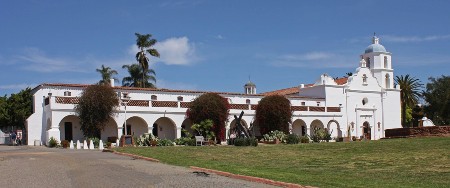 Dear readers, Catholic Online was de-platformed by Shopify for our pro-life beliefs. They shut down our Catholic Online, Catholic Online School, Prayer Candles, and Catholic Online Learning Resources essential faith tools serving over 1.4 million students and millions of families worldwide. Our founders, now in their 70's, just gave their entire life savings to protect this mission. But fewer than 2% of readers donate. If everyone gave just $5, the cost of a coffee, we could rebuild stronger and keep Catholic education free for all. Stand with us in faith. Thank you. Help Now >
Dear readers, Catholic Online was de-platformed by Shopify for our pro-life beliefs. They shut down our Catholic Online, Catholic Online School, Prayer Candles, and Catholic Online Learning Resources essential faith tools serving over 1.4 million students and millions of families worldwide. Our founders, now in their 70's, just gave their entire life savings to protect this mission. But fewer than 2% of readers donate. If everyone gave just $5, the cost of a coffee, we could rebuild stronger and keep Catholic education free for all. Stand with us in faith. Thank you. Help Now >
Mission San Luis Rey de Francia: Agricultural and Ranching Powerhouse
FREE Catholic Classes
Mission San Luis Rey de Francia, founded in 1798, was not only the largest of California's 21 missions but also one of the most agriculturally productive. At its peak, the mission managed approximately 250,000 acres of land, much of which was dedicated to farming and ranching. The mission cultivated crops such as wheat, barley, corn, beans, and various fruits. Olive trees and vineyards also thrived, supporting the production of olive oil and wine, which were essential to the mission's self-sufficiency and trade.

Image Credit: Wikimedia Commons
Highlights
10/8/2024 (5 months ago)
Published in U.S.
Keywords: Mission San Luis Rey de Francia, California Missions, Catholic missions
The mission's ranching operations were even more impressive, boasting vast herds of cattle, sheep, and horses. By the early 1820s, Mission San Luis Rey managed an estimated 20,000 head of cattle, 19,000 sheep, 1,300 goats, and 2,000 horses.
These numbers made it one of the most powerful economic centers in Spanish California. The cattle, in particular, were critical to the mission's production of hides and tallow, which were vital export goods in the "hide and tallow trade," a major industry in California during this period. Hides were used for leather goods, while tallow, rendered from cattle fat, was a key ingredient in making soap and candles.
The mission's hide and tallow works were some of the most significant in the region, exporting large quantities to both local and international markets. The abundance of livestock and the fertile lands allowed San Luis Rey to engage in trade with other missions and settlements, further bolstering its influence.
In addition to cattle and sheep, horses played a central role in daily mission life, with more than 2,000 horses bred and maintained at the mission. The mission also had sheep that were integral for wool production, which was used to produce clothing and textiles within the mission.
The Mission's Infrastructure
To support these extensive agricultural and ranching operations, Mission San Luis Rey developed advanced infrastructure. Water was channeled through aqueducts, and irrigation systems were built to maintain the crops throughout the year. These systems allowed for continuous farming in the often arid California environment. The mission's workshops produced various goods, including leather products, textiles, and ironwork, all contributing to the mission's self-sustaining economy.
Decline After Secularization
After secularization in 1834, the mission's lands were redistributed, and much of its agricultural and ranching prowess diminished. However, the mission's earlier success left a lasting legacy in the region, and its impressive ranching and agricultural operations are remembered as a key part of California's early economic development.
Today, Mission San Luis Rey continues to serve as a historical site, parish, and retreat center, allowing visitors to explore its rich history and learn about its crucial role in California's agricultural and religious past.
Join the Movement
When you sign up below, you don't just join an email list - you're joining an entire movement for Free world class Catholic education.

-

- Stations of the Cross
- Easter / Lent
- 5 Lenten Prayers
- Ash Wednesday
- Living Lent
- 7 Morning Prayers
- Mysteries of the Rosary
- Litany of the Bl. Virgin Mary
- Popular Saints
- Popular Prayers
- Female Saints
- Saint Feast Days by Month
- Pray the Rosary
Honoring Pope St. John Paul II: A Legacy of Faith, Hope, and Human Dignity
A Glimpse into the Face of St. Teresa of Ávila: Scientific Reconstruction Reveals Remarkable Details
Vice President JD Vance Plans Easter Weekend Visit to Rome, Meeting with Italian Leaders Uncertain
Daily Catholic
 Daily Readings for Thursday, April 03, 2025
Daily Readings for Thursday, April 03, 2025 St. Richard of Wyche: Saint of the Day for Thursday, April 03, 2025
St. Richard of Wyche: Saint of the Day for Thursday, April 03, 2025 Prayer for God's Help in Daily Actions: Prayer of the Day for Friday, March 14, 2025
Prayer for God's Help in Daily Actions: Prayer of the Day for Friday, March 14, 2025 Daily Readings for Wednesday, April 02, 2025
Daily Readings for Wednesday, April 02, 2025 St. Francis of Paola: Saint of the Day for Wednesday, April 02, 2025
St. Francis of Paola: Saint of the Day for Wednesday, April 02, 2025- To Perceive Animals as God's Gifts: Prayer of the Day for Thursday, March 13, 2025
![]()
Copyright 2025 Catholic Online. All materials contained on this site, whether written, audible or visual are the exclusive property of Catholic Online and are protected under U.S. and International copyright laws, © Copyright 2025 Catholic Online. Any unauthorized use, without prior written consent of Catholic Online is strictly forbidden and prohibited.
Catholic Online is a Project of Your Catholic Voice Foundation, a Not-for-Profit Corporation. Your Catholic Voice Foundation has been granted a recognition of tax exemption under Section 501(c)(3) of the Internal Revenue Code. Federal Tax Identification Number: 81-0596847. Your gift is tax-deductible as allowed by law.

 Daily Readings for Thursday, April 03, 2025
Daily Readings for Thursday, April 03, 2025 St. Richard of Wyche: Saint of the Day for Thursday, April 03, 2025
St. Richard of Wyche: Saint of the Day for Thursday, April 03, 2025 Prayer for God's Help in Daily Actions: Prayer of the Day for Friday, March 14, 2025
Prayer for God's Help in Daily Actions: Prayer of the Day for Friday, March 14, 2025 St. Francis of Paola: Saint of the Day for Wednesday, April 02, 2025
St. Francis of Paola: Saint of the Day for Wednesday, April 02, 2025

